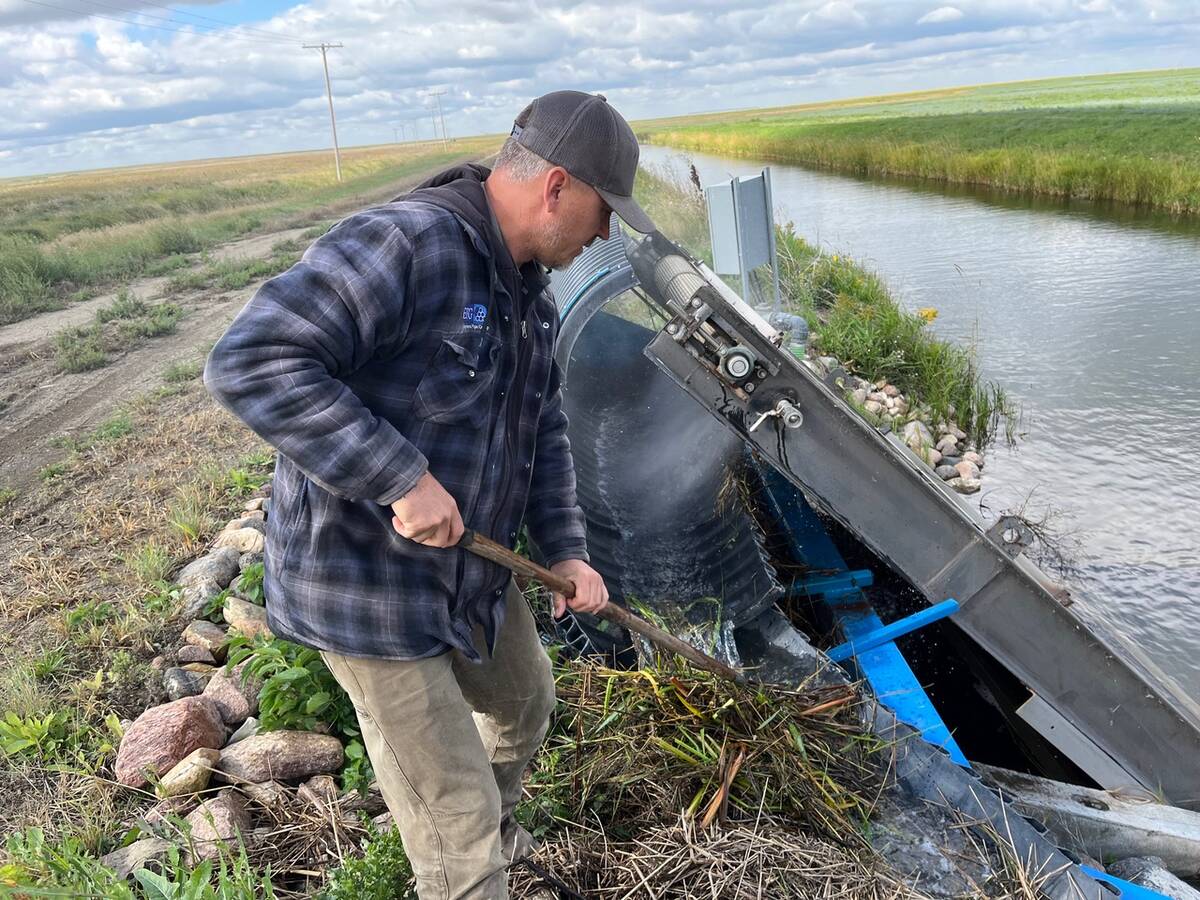The bottom line may be prettier without makeup.
While black summerfallow fields are no longer in vogue, many producers are still fixated on weed-free fields. However, a veteran weed researcher says that in some cases farmers may be paying for cosmetics.
John O’Donovan, an Agriculture Canada researcher at Beaverlodge, Alta., knows there may be nothing uglier than a thin crop of barley sticking up above a nice bright green field of newly podded canola, but he said that in many cases the cereal won’t effect the oilseed’s yield.
Read Also

Saskatchewan farmer uses tile drainage to manage water
The integration of both irrigation and tile drainage results in higher yields, water efficiency, improved soils and less nutrient runoff, says one producer.
“Sometimes the hardest thing for a chemical dealer or agronomist to convince a farmer of is not to spray,” O’Donovan said.
“Worse yet, sometimes producers are tempted to cut rates to clean up weeds in a crop and it results in selecting for herbicide resistance.”
He said knowing when not to apply herbicides can be more effective than using them.
Weed control research has focused on eliminating competition rather than establishing the level of threat that competition poses.
“(The) economics of herbicide use need to be applied before the spray is,” O’Donovan said.
A computer model he developed has been integrated with Westco Fertilizer’s Agro Manager on Weeds software that dealers, Saskatchewan Wheat Pool and Agricore United use to aid producers in their spraying decisions.
“Wild oats are a good example of an expensive weed to control that requires specialized herbicides that are good for little else,” he said.
O’Donovan’s model allows the software to compare the number of weed plants, their species and most importantly their maturity relative to that of the crop.
His work has shown that given the opportunity, many crops will out-compete weeds if they have a head start.
“You need a good burn-off (application of non-selective herbicide) and then get that crop germinated as quickly as possible afterwards,” he said.
Record keeping is key to determining whether weeds will need control.
“If you know where the crop development is relative to the weeds, you can then look at how many weeds and the type to decide whether or not it pays to spray.”
He said reduced tillage systems have changed the way producers need to think about weed populations.
“You can have 50 wild oat seeds per sq. metre and still not have a problem. They remain on the surface,” he said.
The lack of tillage means older models of weed seed population calculations are often inaccurate.
Weed seeds on the surface are subject to weathering, predation and disease.
O’Donovan said his system might work particularly well with feed barley, which is a low-priced crop that economically can stand little in additional input costs.
He suggested that if producers know they have a weed problem in a field and are planning a cereal rotation, they might choose a taller, more aggressive barley variety that canopies well and seed it early.
“We’ve found that an AC Lacombe, a tall variety, is more competitive than some of the semi-dwarf varieties. With a good start it may not need any (post emergent herbicide applications).”
Weeds stunted by more competitive cropped plants use few nutritional or water resources and seldom are able to produce viable seeds.
By using economic spray threshold models, O’Donovan’s system can potentially save farmers 10 to 17 percent on their herbicide bills.
O’Donovan is now working on trials to establish a three-year crop rotation that might allow producers to skip herbicide use during one of those years.
“Until you do the research and work out the economics, we don’t know what pays and what doesn’t when it comes to weed control,” he said.
















